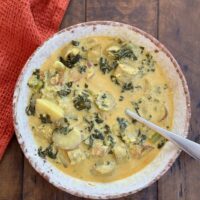 Pesticides are so prevalent these days that we may be exposed to them in a variety of ways . The Environmental Protection Agency considers food, drinking water, and residential pesticide use as important sources of exposure. However, the most common way is through the foods we consume. According to the National Academy of Sciences, the major source of exposure to pesticides for infants and children would be diet. Pesticides are suspected to cause many adverse effects in humans and other living organisms. A recent study done by Harvard university researchers and funded by NIH (National Institute of Health) suggests that organophosphate(a type of pesticide) exposure, at levels common among US children, may contribute to ADHD prevalence 1.
Pesticides are so prevalent these days that we may be exposed to them in a variety of ways . The Environmental Protection Agency considers food, drinking water, and residential pesticide use as important sources of exposure. However, the most common way is through the foods we consume. According to the National Academy of Sciences, the major source of exposure to pesticides for infants and children would be diet. Pesticides are suspected to cause many adverse effects in humans and other living organisms. A recent study done by Harvard university researchers and funded by NIH (National Institute of Health) suggests that organophosphate(a type of pesticide) exposure, at levels common among US children, may contribute to ADHD prevalence 1.
Are there any things we can do to limit the amount of our pesticide exposure? Well, for starters, we need to start asking more questions and understand the quality of the food we consume. (http://www.whatsonmyfood.org is one good informational resource that I came across in my searches) And then it seems like there are certainly some simple things we can do to reduce our exposure and thereby protect our health and the health of our loved ones.
1. Wash your veggies!
Yes, yes washing with warm water thoroughly does help reduce pesticide content 2. Best way to clean the produce to get rid of pesticide content (at least reduce it) is to scrub vigorously for a few minutes. Blot them dry with a paper towel or a clean dish cloth . The NPIC (National Pesticide Information center) recommends that you wash your produce under running water and then scrub produce with tough skin, like melons or potatoes. In addition, dry your fruits and vegetables with a towel 7.
2. Consider buying organically grown…
…for the following list of vegetables and fruits which have a high pesticide content generally as designated by the Environment Working Group. If organic is too expensive, at least make sure you wash these thoroughly as explained in #1. (The Environmental Working Group studied 100,000 produce pesticide reports from the U.S. Department of Agriculture and the U.S. Food and Drug Administration to create a list of the dirtiest and cleanest produce 3) :
Dirty (high pesticide content)
- Apples
- Celery
- Cherry tomatoes
- Cucumbers
- Grapes
- Hot peppers
- Nectarines (imported)
- Peaches
- Potatoes
- Spinach)
- Strawberries
- Sweet bell peppers
- Kale/collard greens
- Summer squash
3. Gorge on the following ‘clean’ foods! :
Clean (low pesticide content)
- Asparagus
- Avocados
- Cabbage
- Cantaloupe
- Sweet Corn
- Eggplant
- Grapefruit
- Kiwi
- Mango
- Mushrooms
- Onions
- Papayas
- Pineapples
- Sweet Peas
- Sweet Potatoes
4. Peel, trim and clean
Peel fruits and vegetables when possible to reduce dirt, bacteria, and pesticides. Discard outer leaves of leafy vegetables. Make sure you trim fat from meat and skin from poultry and fish too because some pesticides residues are known to collect in fat4.
5. Do eat a variety of vegetables and fruits!
Eat more ( organic or conventional) produce for better health and a longer life. This advice is substantiated by decades of nutritional studies that show people who eat more fruits and veggies enjoy improved health 4, 6.
6.Eat Fresh , Buy Local whenever possible
When you buy locally grown produce, you are getting the freshest produce since there is no transportation involved 5.
References:
1.http://pediatrics.aappublications.org/content/early/2010/05/17/peds.2009-3058.full.pdf
2.http://suppversity.blogspot.com/2013/12/true-or-false-washing-your-fruit-and.html
3.12 Most Pesticide-Laden Fruit and Vegetables: The Dirty Dozen and Clean Fifteen, Updated (naturalsociety.com)
4.http://www.epa.gov/pesticides/food/tips.htm
5.http://eatlocalgrown.com/article/11294-local-vs-organic-food.html
6.http://www.safefruitsandveggies.com
7.http://www.huffingtonpost.com/2013/10/16/pesticides-food_n_4111009.html


















Few things that we take care with all veggies that are bought from the local market :
1. Plan your dish the night before. Have the veggies soaked in water mixed with turmeric powder and salt.
2. The next day make sure, before you cut or peel your veggies , to wash it thoroughly and transfer again to a bowl of water.
3.Once peeled, keep under running tap for a minimum of 20 seconds. That’s the minimum time which will bring any effect of this process (As per CFTRI).
4.For veggies like bitter gourd, use a tooth brush to brush with salt and turmeric mix.
5.Cut/cube and peel only after all these process 🙂
Hope these might as well add up extra info ….
These are excellent tips! Never knew about turmeric…but makes sense considering its antiseptic properties.! thanks so much for sharing!